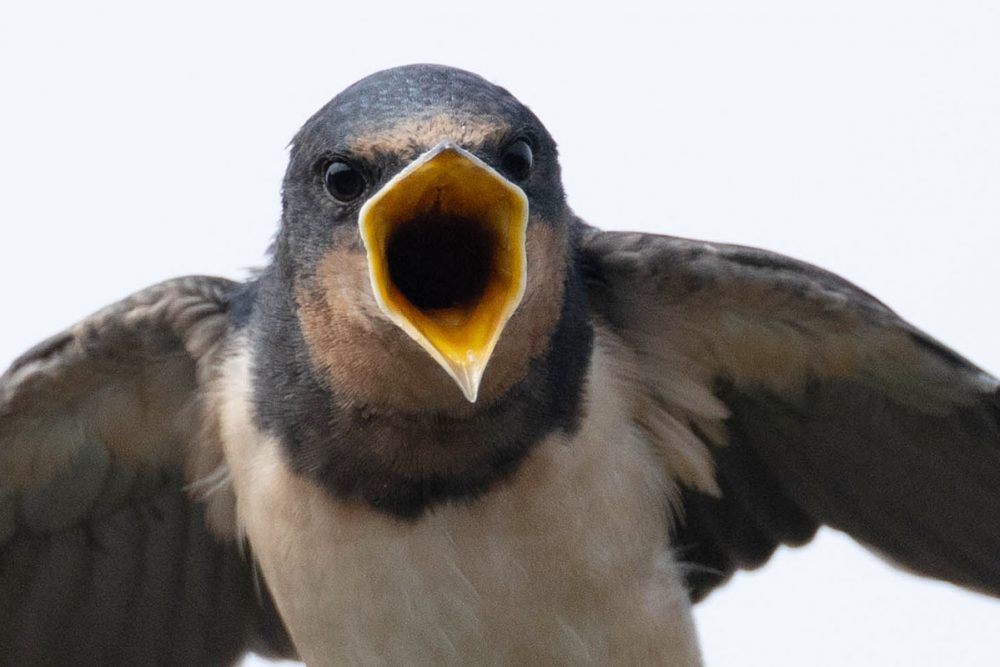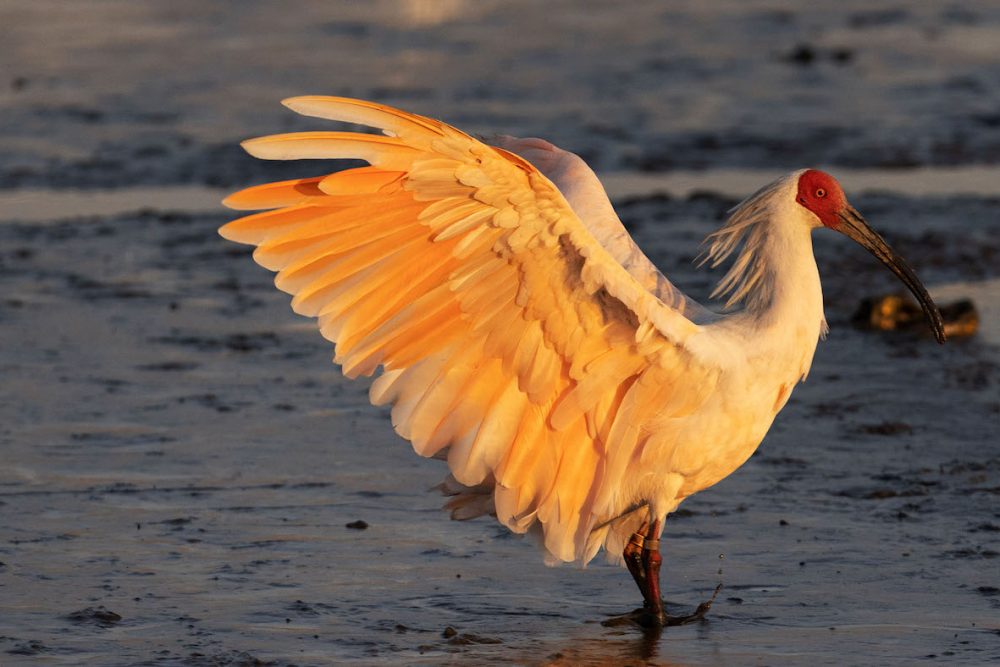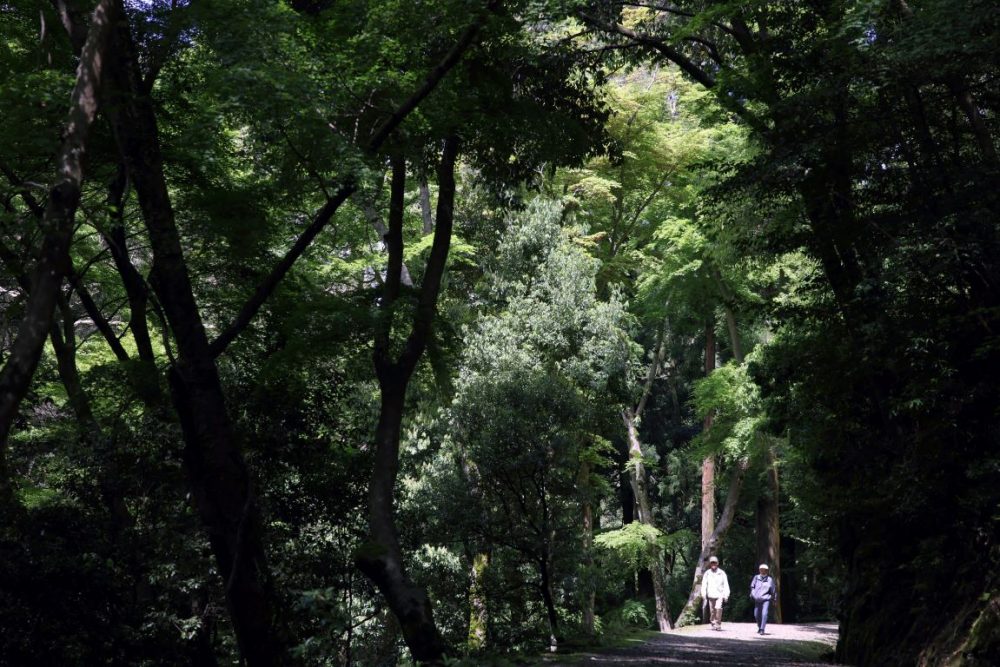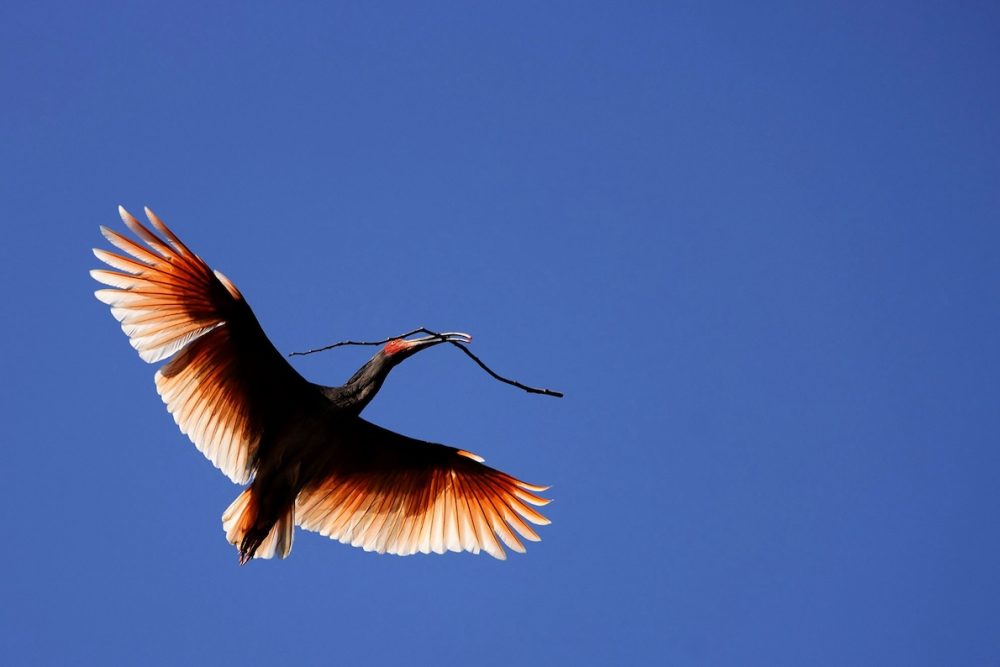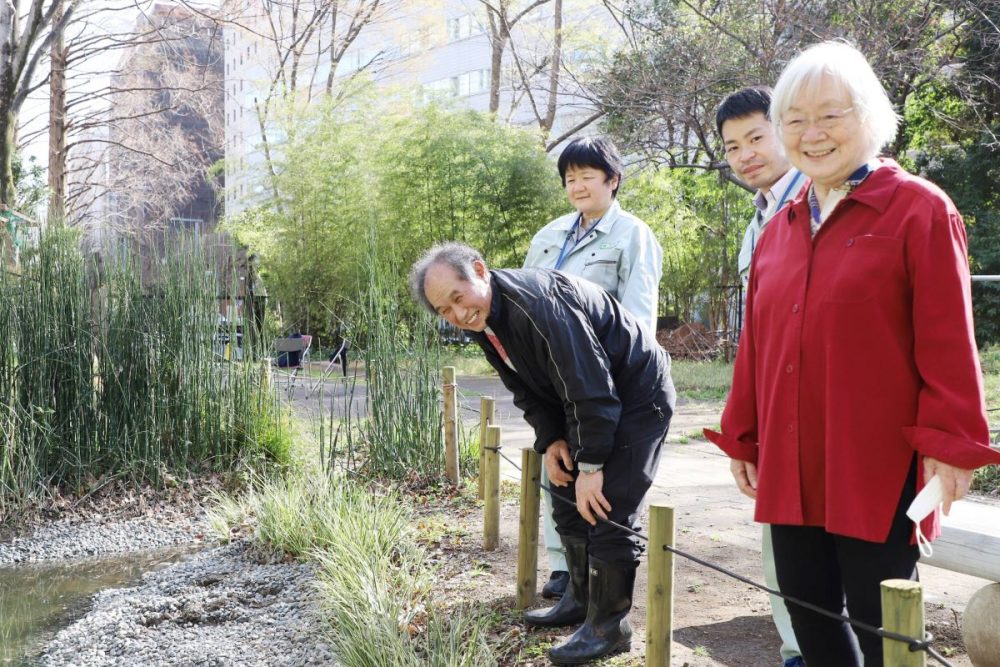Endangered Eastern Marsh Harrier Under Threat from Wind Power Expansion in Hokkaido
The rising construction of wind turbines threatens the nesting sites of the endangered eastern marsh harrier, or chuhi, in the grasslands of northern Hokkaido.

このページを 日本語 で読む
The eastern marsh harrier is a bird of prey and the apex predator of wetland and grassland ecosystems. Called chuhi in Japanese, the species is now threatened with extinction. Major factors in this trend include changes in the natural environment and encroachment on the birds' nesting areas by development activities.
As Japan works to decarbonize, renewable energy projects are flocking to northern Hokkaido. Concerns are rising that these projects pose risks for the chuhi's largest breeding area in the country.
80% in Hokkaido
The Sarobetsu coastal plain encompasses Hokkaido's northernmost cities of Wakkanai, Toyotomi, and Horonobe. Its vast landscape spans 20,000 to 24,000 hectares. At the heart of this wilderness lies a 6,700-hectare marshland, the third largest in the country. The area serves as an important breeding ground for migratory birds.
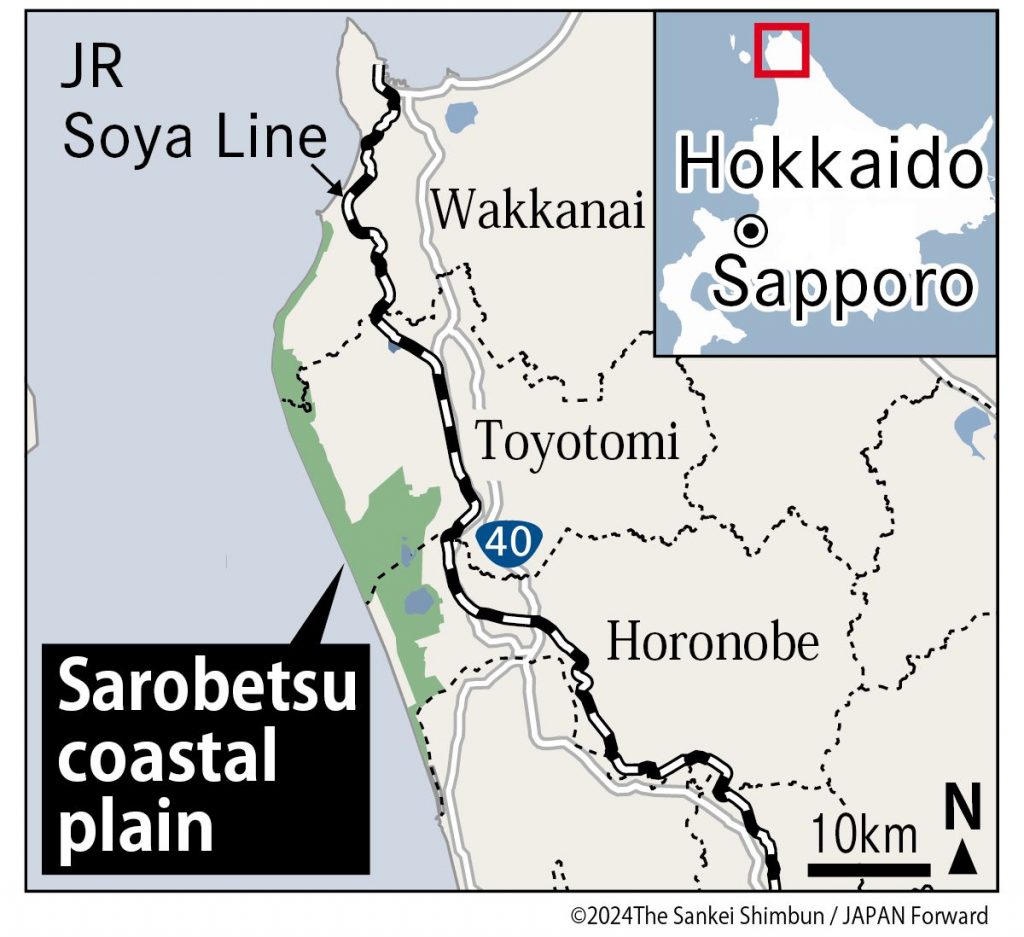
During spring and autumn, tens of thousands of migratory birds of various kinds can be seen gracefully flying in v-shaped formations across the sky. The chuhi are among them. However, the Ministry of the Environment added the bird to Japan's Red List under the Endangered IB category in 2006 due to dwindling numbers.
Chuhi breed in northeastern China and the Russian Far East such as Sakhalin. Then they migrate south to Hokkaido and Honshu from spring to summer for wintering. The cautious birds nest in wetland habitats less prone to attacks from foxes and other natural enemies. They are the only species in the hawk family in Japan that nest on the ground in grasses.
Surveys by the Wild Bird Society of Japan (WBSJ) estimated breeding pairs nationwide to be around 135 as of 2020. Hokkaido had the highest concentration, with 58 pairs around the Sarobetsu coastal plain. Next was the Yufutsu plain in southern Hokkaido with 20 couples, followed by 15 breeding pairs along Hokkaido's Ishikari River basin. Hokkaido alone accounts for 80% of the entire chuhi population in Japan.
Accelerated Global Warming Raises More Concerns
If chuhi became extinct, how would it affect the ecosystem? Tatsuya Ura, senior researcher at WBSJ has raised a warning flag. If the balance of the ecosystem collapses, "there may be a domino effect that impacts human life," he says.
Chuhi occupy the top of the food chain in wetland and grassland ecosystems, preying on rodents, small birds, and insects. Without them, a surge in rodent and insect populations could lead to the depletion of vegetation in grasslands and the eventual shrinkage of wetlands and forests. Forests absorb carbon dioxide and release oxygen. Their decline could contribute to the acceleration of global warming.
Since 1970, development has progressed in the chuhi's habitat in Japan. While some birds adapted by changing their nesting sites over the years, now Ura feels the situation is even worse. "The population seems to have decreased compared to the 2020 survey," he comments. Not only are wetlands gradually disappearing due to changes in vegetation caused by drying, but also construction vehicles for wind power generation projects are approaching nesting sites. Feeling threatened, the birds abandon their nests.
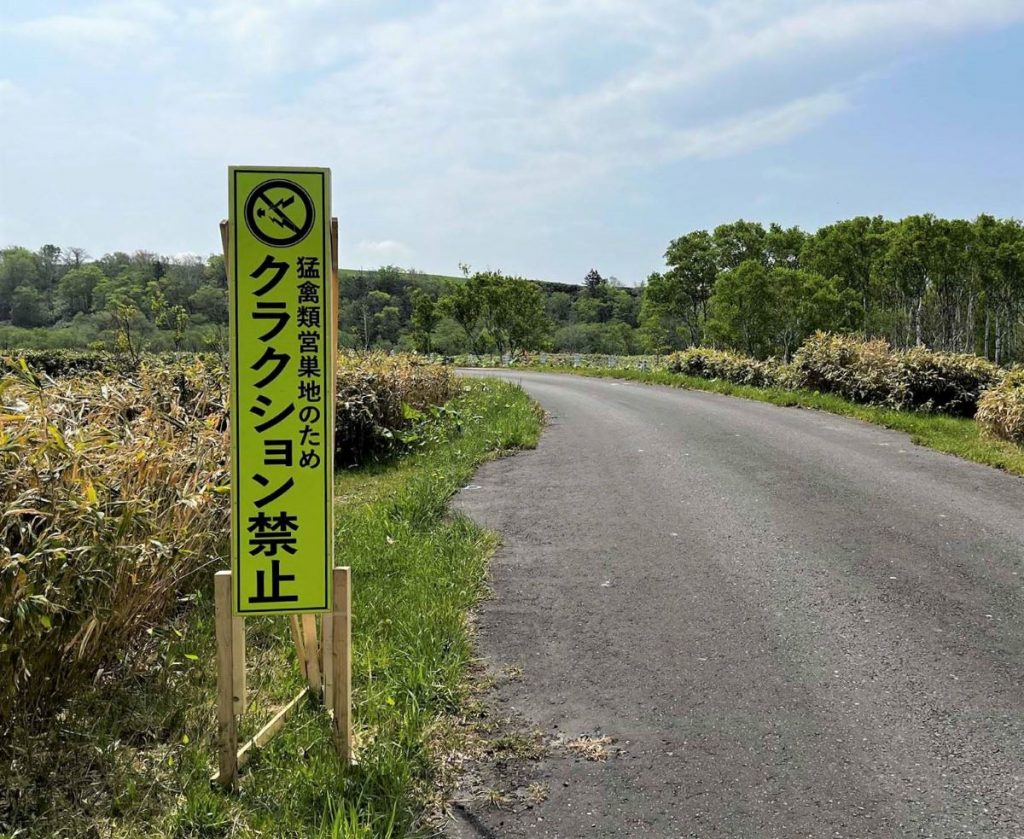
"The response of the construction companies was limited to installing signs urging no honking. They made no visible effort to mitigate the disturbances caused by numerous large vehicles carrying materials," stated a resident of Toyotomi who witnessed the situation firsthand.
Wind Turbines on the Rise
A study published by the Wild Bird Society of Japan in March 2024 confirmed that migratory birds are avoiding the increasing number of wind turbines in northern Hokkaido near Wakkanai, Toyotomi, and Horonobe. The chuhi flies at a lower altitude than turbine blades, meaning the risk of collision is considered low. However, the increasing number of turbines is cause for concern. If built in proximity to nesting areas, "we could see impacts on breeding," says Ura.
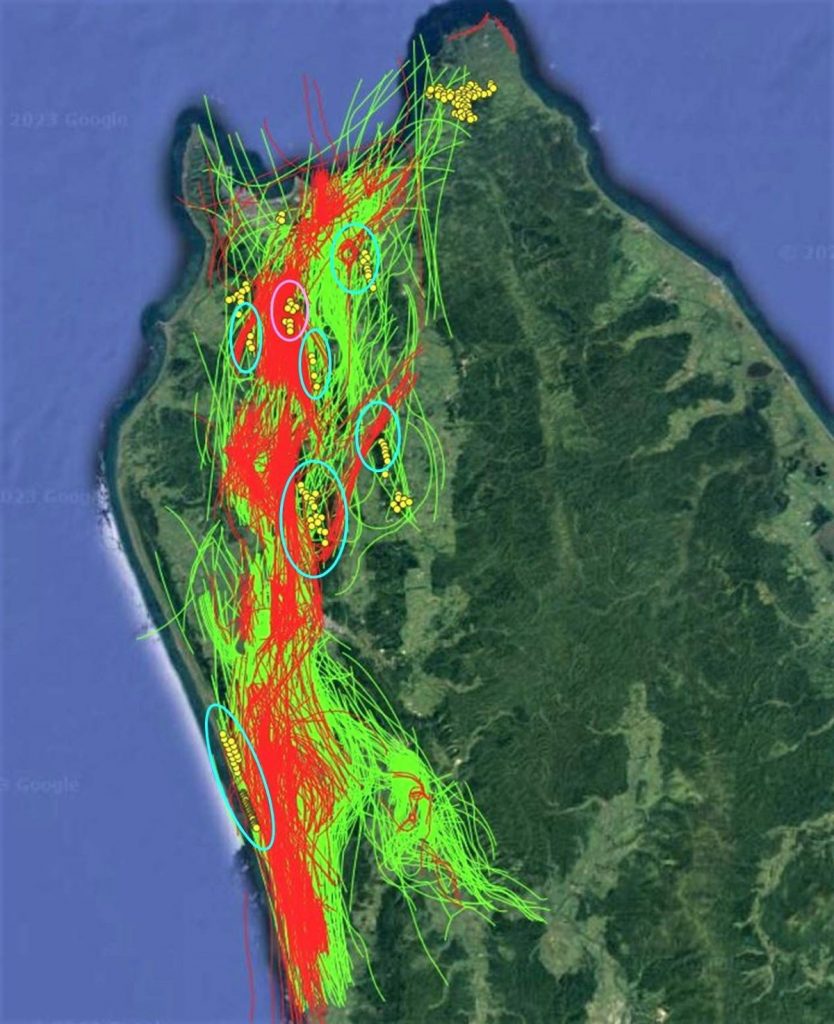
As of March 5, 2024, there were 206 wind turbines in Hokkaido's Soya Subprefecture. Taking into account turbines under construction or planned construction undergoing environmental impact assessments, the number could potentially rise to a maximum of 777 in the future. This inevitably raises the risk of nest abandonment.
In the 90th year since its establishment, the Wild Bird Society of Japan has launched a five-year Chuhi Protection Project. The goal is to conserve both chuhi and the wilderness. The project is urging national and Hokkaido authorities to designate bird and animal protection areas to preserve biodiversity, including the rare bird species inhabiting wetlands and grasslands.
Despite being the eastern marsh harrier's largest breeding ground, northern Hokkaido is witnessing an acceleration in wind power projects. Amid expectations of larger wind turbines, measures to protect fauna and flora remain inadequate.
このページを 日本語 で読む






